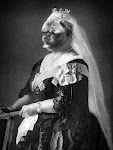Thankfully the wonderful Casavant
Frères op 3875 organ does not sit grandly idle as some concert hall
organs do. Last evening, a very full Helzberg Hall audience was
treated to the first in a series of four organ recital concerts
featuring prominent organists from around the country. Each concert
is hosted by Michael Barone, host of Public Radio's long running
“Pipedreams” program. The organist was Dr. Richard Elliott,
Principal Organist of the Mormon Tabernacle in Salt Lake City.
The concerts begin with an informal
fireside chat between Barone and the organist, discussing the
organist's training and experience and then progressing to a
demonstration of some of the organ's voices and timbres. While the
experienced organists might find this a bit uninteresting, for the
layman, it was a fascinating glimpse into the world of the King Of
Instruments.
The program was well designed to show
off the capabilities of Opus 3875. Its French genes were highlighted
by the majestic Louis Couperin Chaconne from 1658. The organ's
characteristic sec French reeds were in full show in this grand
arrangement by Joseph Bonnet.
The magnificent Bach Toccata and Fugue
in F displayed Elliott's talent on the pedals and his ability to keep
the drama of the toccata and the entrances in the Fugue flowing
through Bach's torrent of notes. Elliott was aided by the organ's
clear and precise pedals. A piece titled “Cantelena”by former
Tabernacle Organist John Longhurst let the dulcet flutes have their
fine, yet ephemeral moment. The piece was lovely, but did not make a
long lasting impression. Composed for a Tabernacle radio broadcast,
perhaps that was its intention.
Elliott's arrangement of “Every time
I feel the Spirit” was a fine and amusing arrangement, capturing
the improvisational style of African-American spirituals. But no
matter how agile the organist, music like this just comes out a bit
clunky when played on a concert organ; a rousing “Amen” coda made
things all right however!
The main course was an arrangement for
organ of Mussorgsky's Pictures at an Exhibition. I had heard
orchestra, piano and brass ensemble live and even on rock band,
synthesizer and guitar through recordings. But never on an organ.
While Elliott's technique was
formidable, to me this arrangement sounded like it was arranged by
Charles Addams instead of Jean Guillou/Keith John, emphasizing the
spooky and otherworldly voices of the organ. This fit the music well
in the strange “Gnomus”, “Catacombs” and “Baba Yaga”
sections and to some extent the “Old Castle”. The “Ballet of
the Chicks in their Shells” was fleet and light, marred by the
unnecessary bird chirping sound effect. But Elliott and Op 3875 made
the grand “Great Gate at Kiev” the highlight of the evening.
Grand and glorious but not over-the-top, the might of the pipes could
easily force the audience back in their seats. Elliott even
negotiated the unforgiving runs and finger work in this mighty
movement, which really fit the organ the best of all.
The encore of “I got Rhythm” simply
blew me away. Much more idiomatically arranged for the organ than the
earlier spiritual.
Thus a new concert series for the
Kansas City Symphony and Op 3875 is off to a fine start. A most
enjoyable and enlightening evening.


